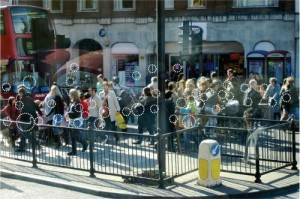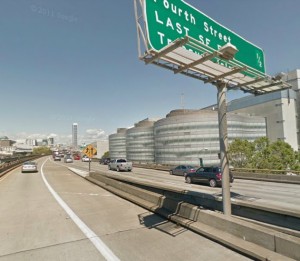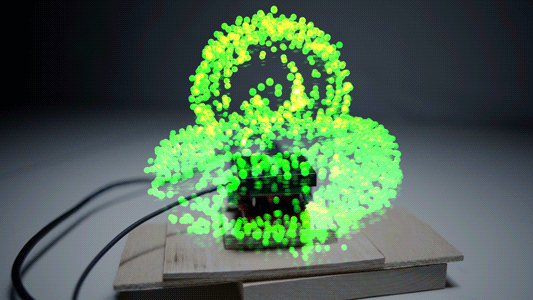 This final installment on the New Aesthetic (Part I: Seeing Like a Machine; Part II: Writing Like a Drone) considers the awkward physicality of the Internet as a thing. If the New Aesthetic is that “structure of feeling” produced by the irruption of digital technology into our everyday life, then what about the strange im/materiality of the network underwriting and making possible this irruption, the Internet? What sort of a thing is the Internet? And how should we understand its geography? Below, I don’t answer these questions (obviously).
This final installment on the New Aesthetic (Part I: Seeing Like a Machine; Part II: Writing Like a Drone) considers the awkward physicality of the Internet as a thing. If the New Aesthetic is that “structure of feeling” produced by the irruption of digital technology into our everyday life, then what about the strange im/materiality of the network underwriting and making possible this irruption, the Internet? What sort of a thing is the Internet? And how should we understand its geography? Below, I don’t answer these questions (obviously).
Bad Abstractions: The Cloud
The growing emphasis on cloud computing would make it seem as if the Internet is somehow literally getting away from us, elevating itself into an abstract virtuality of nowhere. In actual fact, the cloud actually makes it easier for an ever-fewer number of mostly U.S.-based companies—Google, Apple, Microsoft, etc etc—to centralize the copious data we willingly fork over. And the U.S. Patriot Act even gives Washington jurisdiction over the non-U.S. data centers of these cloud companies. Coming to a server near you? The awkward materiality/immateriality of the Internet and, indeed, its reification to the point of spectacle means political space is being quietly reconfigured without anyone really caring to notice.
Of course, even the cloud has a somewhere, a geography; in fact, as “a planetary-scale infrastructure,” how could it not? The cloud is made possible by the Internet’s hulking physicality of server spaces and trans-continental fiber-optic cables, some running along for miles on the ocean floor. The skeletal make up of our Brave New Digital World; that is, the concrete nuts and bolts of this network are surprisingly old school, hard and fixed:
[youtube_sc url=”http://youtu.be/XE_FPEFpHt4″]
 Occasionally, we butt up against the physicality of the network and it surprises us, like when an entire swath of Colombia’s Internet stopped working because of a severed underwater cable. Or like when friends from out of town came to visit me at Berkeley, I’d pick them up from the San Francisco airport and on our way through SF, I liked to point to this building next to the highway and tell them matter of factly, “That’s the Internet.” Usually, they would silently ponder the building and nod with a serious gaze, and then we’d have a good laugh. The futuristic undulating look of the building and its opaque frosted windows made the suggestion almost believable—well, I guess it has to be somewhere…. The building’s actually a jail.
Occasionally, we butt up against the physicality of the network and it surprises us, like when an entire swath of Colombia’s Internet stopped working because of a severed underwater cable. Or like when friends from out of town came to visit me at Berkeley, I’d pick them up from the San Francisco airport and on our way through SF, I liked to point to this building next to the highway and tell them matter of factly, “That’s the Internet.” Usually, they would silently ponder the building and nod with a serious gaze, and then we’d have a good laugh. The futuristic undulating look of the building and its opaque frosted windows made the suggestion almost believable—well, I guess it has to be somewhere…. The building’s actually a jail.
Immateriality & Invisibility: Nearness and Reading Volume
We’re literally surrounded, if not saturated, by radio and wireless signals. Social spaces are not only infused with these invisible agents, but increasingly produced by them. Departing from Adam Greenfield’s notion that “the complex technologies the networked city relies upon to produce its effects remain distressingly opaque,” comes “Immaterials: Light Painting WiFi Film” by Timo Arnall, Jørn Knutsen and Einar Sneve Martinussen. The artists used LEDs to illuminate the Wi-Fi signals coursing through urban spaces with long-exposure photography:
[vimeo 20412632 w=640&h=]
There’s also this video of “Wireless in the World”:
[vimeo 12187317 w=640&h=]
Touch along with their partners at BERG have been working on the spatiality of Radio-Frequency Identification (RFID) technology—think of when you “swipe” a card without physically having to touch it with anything. It has to do with proximity or “nearness”—near field communications. Trying to explore the various interactions made possible by RFID—like between mobile phones, other devices, and physical spaces or precise locations—they discuss the making of readable volume:
In order to study the readable volume around an RFID reader, we built experimental probes that would flash an LED light when they successfully read an RFID tag. The readable volume is not the same as the radio field, instead it shows the space within the field in which an RFID tag and an RFID reader will interact with each other.
[vimeo 7022707 w=640&h=]

